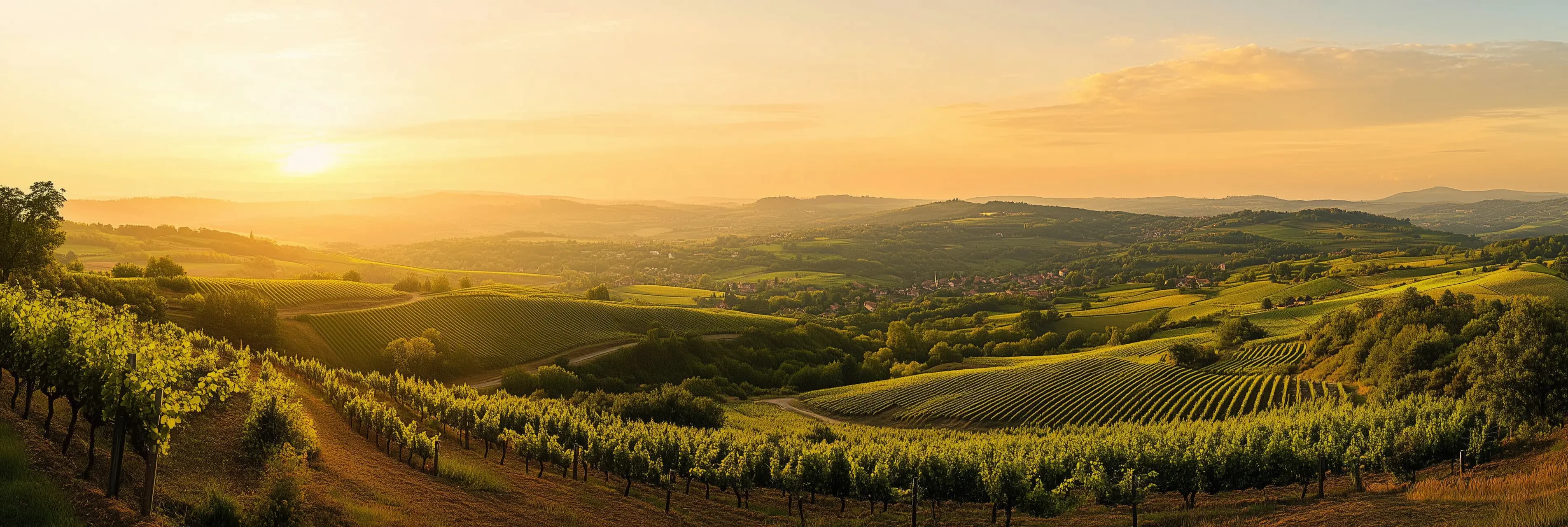Tressallier, Aligoté, Gouais and Pinot Noir: the lost grapes of Beaujolais
Beaujolais is globally known for its lively Gamay and fresh Chardonnay, but hidden beneath these stars of the region lies a rich vinous history filled with lesser-known grape varieties. These forgotten grapes, once more common in the region, are slowly finding their way back into the spotlight as winemakers seek to diversify and honor the heritage of their vineyards.
A Historical Perspective: Beaujolais Before Gamay Dominance
Before the 20th century, Beaujolais was a much more diverse wine region. While Gamay was already popular, other varieties thrived, adding a complexity that reflected the region's diverse terroirs. Over time, economic pressures and a demand for consistency led winemakers to focus heavily on Gamay, often at the expense of the region’s other indigenous grape varieties. Today, there is a renewed interest in this diversity as some forward-thinking producers experiment with these forgotten grapes, bringing them back to the vineyards to offer wine lovers something fresh and unexpected.
Tressallier: A Forgotten White Grape with Potential
One of the most intriguing of these grapes is Tressallier, a white variety traditionally grown in the neighboring Auvergne region. Known for its high acidity and mineral-driven characteristics, Tressallier offers an exciting alternative to Chardonnay. While Tressallier is still grown in limited quantities in Beaujolais, its rediscovery could signal a shift toward more diverse white wine production in the region, especially as winemakers face the challenges of a changing climate.
Aligoté: A Familiar Name in New Territory
Aligoté is another grape with roots in Beaujolais, though it’s often associated with Burgundy. Historically, Aligoté was planted throughout Beaujolais alongside Gamay, contributing to local blends. Over time, it was mostly replaced by Chardonnay, but a few producers have begun to revive this lesser-known variety. With its zesty acidity and citrusy flavors, Aligoté is being used to create bright, food-friendly wines that contrast with the richer profile of Chardonnay.
Pinot Noir: An Unexpected Return
Though rare today, Pinot Noir once had a significant presence in Beaujolais, particularly in cooler zones where it thrived alongside Gamay. As the global demand for Pinot Noir continues to grow, some adventurous producers in Beaujolais are experimenting with planting this delicate grape again, hoping to create wines that appeal to fans of both Burgundy and Beaujolais. Pinot Noir’s elegant structure and ability to express the nuances of terroir could provide a new dimension to the region’s wine offerings. As climate change reshapes the winemaking landscape, its future in Beaujolais looks promising.
Gouais Blanc: An Ancient Legacy
Gouais Blanc holds a crucial place in the history of French viticulture. Though virtually extinct today, it is one of the oldest grape varieties once grown extensively in France, including Beaujolais. It was considered a “peasant grape” for its hardiness, though it was eventually phased out by more refined varieties. Despite its decline, Gouais Blanc has left an indelible mark on wine history, as it is the parent grape of both Chardonnay and Gamay. Through cross-pollination with Pinot Noir, it gave rise to these now ubiquitous grapes, making its historical significance undeniable. Gouais Blanc itself produces simple white wines with light acidity and mild fruity flavors. Though it is not widely cultivated anymore, some producers in France are working to preserve the few remaining Gouais Blanc vines as part of a cultural heritage project. Its story reminds us of the intricate web of grape genealogy that shaped the wines we drink today.
Climate Change and the Revival of Forgotten Grapes
The impact of climate change is another factor driving the resurgence of forgotten grape varieties.
Beaujolais’ traditionally moderate climate has warmed in recent decades, and producers are finding that Gamay and Chardonnay are not always as adaptable to these shifts as other grape varieties. Forgotten grapes like Tressallier, Aligoté, and Pinot Noir, with their adaptability to cooler conditions and higher acid retention, could provide the region with more resilient options.
As Beaujolais winemakers explore their region’s forgotten grape varieties, they are not only honoring the history of the land but also creating a more diverse and resilient future. Grapes like Tressallier, Aligoté, Gouais Blanc and Pinot Noir are finding new life in these vineyards, adding richness and complexity to a region often defined by a single grape. For wine lovers seeking something off the beaten path, these revived varieties offer a taste of Beaujolais’ long-lost past, and perhaps a glimpse into its future.

